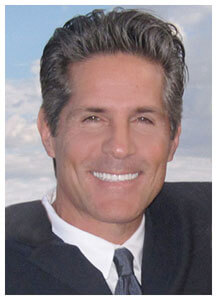Thomas Barbey grew up in Geneva, Switzerland, across the street from the “Caran D'ache” factory, the largest manufacturer of art supplies. He started drawing seriously at the age of 13, using black “encre de Chine” and gouaches for color. His influences were Philippe Druillet, Roger Dean and H.R. Giger. After living in Geneva for 17 years and designing posters for musical bands, he decided to move to Italy, where he lived in Milan for 15 years making a living as a successful recording artist, lyricist and fashion photographer. Today, he resides in Las Vegas and travels the world, taking his camera wherever he goes. Thomas has been a photographer for over twenty years now and prefers to use his old Canon AE1s when he shoots in 35mm or his RB67 when he shoots in medium format. More recently, he has been doing Black and White Photomontages for the sole purpose of doing Fine Art, without working for a specific client. He has combined several images taken over a period of twenty years to create surreal situations with the help of the enlarger in a dark room. His work has a specific style and is very characteristic. He only works with Black and White, including Sepia toning at times. Every single one of his images has to pass what he likes to call the “So what?” test. If a combination of two or more negatives put together doesn't touch him or have any particular meaning, he starts over. At times, he tries to combine images and sometimes the results can be disappointing. A giant clock in the middle of the ocean can be an unusual image, but if he looks at it and says to himself, “So what?”, this means it isn't good enough.” If, instead, an ocean liner is going down a “funnel-type” hole and he titles it “Shortcut to China”, it takes on a whole new meaning. The picture takes you into an imaginary world where you can see the captain telling the passengers to fasten their safety belts and get prepared for the descent, and so on. At times Thomas comes up with ideas beforehand, try to materialize them and it works. At other times, it comes as an accident, where the ideas come afterwards, when the image is already finished and the concept has yet to be understood. Thomas claims he is learning constantly through the process of creation. Thomas travels 2-3 times a year to take photographs of different things and places. Sometimes he uses an image several years later, but only when it fits, like the perfect piece in a puzzle, and completes his latest project. Some images are composed of negatives that are separated by a decade in the actual time that he has taken them and only come to life when they found their perfect match. It's the combination of two or more negatives that give birth to a completely unusual vision, but most of all, the title he gives the final image is the glue and the substance of the piece.
Source: thomasbarbey.com
